| 12 April |
• yesterday • tomorrow |
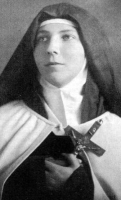
• Juanita Fernandez Solar
• Teresa de los Andes
• Teresa of Jesus of the Andes
13 July (Carmelites)
Born to an upper class family. From her adolescence Teresa was devoted to Christ. Greatly influenced by the autobiography of Saint Thérèse de Lisieux. She entered the monastery of the Discalced Carmelite nuns at Los Andes on 7 May 1919, and was given the name Teresa of Jesus. A model for young people. The first Chilean and the first member of the Teresian Carmel in Latin America to be beatified.
13 July 1900 at Santiago, Chile as Juanita Fernandez Solar
12 April 1920 at the Carmelite convent at Los Andes, Chile of typhus
• 3 April 1987 at Santiago, Chile by Pope John Paul II
• her brother, Luis, attended the beatification
21 March 1993 by Pope John Paul II
• against bodily ills
• against illness
• against sickness
• sick people
• young people in general
There will never be any separation between our souls. I will live in Him. Search for Jesus and in Him you'll find me; and there the three of us will continue our intimate conversations, the ones we'll be carrying on there forever in eternity. Love is the fusion of two souls in one in order to bring about mutual perfection. Though I am absent from you, this changes nothing in our relationship. I am always with you, invisibly assisting you in all you do. And if my prayers are worth anything, you can count on them for the rest of my life; because every day I have you with me at Communion time. How much time has passed since we last saw each other, but our souls are always one in the Divine Jesus. A Carmelite sanctifies herself in order to make all the Church's members holy. The goal she (a Carmelite) proposes to herself is very great: to pray and sanctify herself for sinners and priests. To sanctify herself for sinners and priests. To sanctify herself so that the divine sap may be communicated through the union that exists between the faithful and all members of the Church. She immolates herself on the cross, and her blood falls on sinners, pleading for mercy and repentance, for on the cross she is intimately united to Jesus Christ. Her blood, then, is mixed with His Divine Blood. A Carmelite is a sister to priests. Both priest and sister offer a host of holocaust for the salvation of the world. A Sister sanctifies herself, that by being more united to God, the blood of the Divine Prisoner which she receives in her soul might circulate through the other members of Christ's Body. In a word, a Sister sanctifies herself to sanctify her brothers. This pains me greatly; to see that I'm sensibly experiencing feelings of great love. Sometimes it even reaches the point of taking my strength away or the desire to do anything but stretch out on the bed. Let's live intimately united with Him, since one who loves tends to be united with the one loved. The fusing of two souls is done through love. It's true, my dear little sister, we don't live together; but you live in God and I do, too. There, in that abyss of love, we'll live as one. Everything in God is indivisible; we, too, will be inseparable. Sometimes I felt such great love it seemed I could not go on living if these desires continued any longer…Once when the violence of love took hold of me, I grasped a needle and on my chest drew these letters: J.A.M., which means Jesus My Love. Despite the distance separating us, my soul will always be one with yours. We both form but a single soul, isn't that so?
Join me in spirit at 11:30 and at 6. At those times I'm alone with Him, behind my beloved grills.
Why do you feel so alone? Aren't we always really one in our Divine Master? Can you be thinking that your Carmelite sister has no room in her heart to love the one who is part of her very being…? You are with me always; we are still working together.
I hope that you are always joined with my Jesus and so joined with your Carmelite sister, too. When we're there in His presence, if just gazing at Him is enough to make us love Him, and if we are so captivated by His beauty that we can't say anything but that we love Him, why, little sister, should we be upset? How I would have loved, mother dear, to be by your side to console and weep with you. But our souls met by the tabernacle. He leaves His angels and millions of people, to come into your soul, to consummate in you the most intimate union, to transform you into God, to nourish in you the life of grace with which you will attain heaven. - from the letters of Saint Terese of the Andes
https://catholicsaints.info/saint-teresa-of-the-andes/
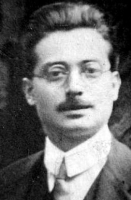
• Giuseppe Mario Carolo Alphonse Moscati
• Joseph Mario Charles Alphonse Moscati
16 November (translation of relics)
Seventh of nine children born to a prominent family, the son of Francsco Moscati, a lawyer and magistrate who served as an altar server whenever possible, and Rosa de Luca dei Marchesi di Roseto, whose family was Italian nobility. Giuseppe's family moved to Naples, Italy when the boy was four years old; he made his First Communion at age eight, Confirmation at ten. Friend of Blessed Bartolo Longo and Blessed Caterina Volpicelli. Received his doctorate from the University of Naples in 1903. Worked at and served as administrator of a hospital for the incurable while continuing to study and do medical research. Assisted in the preparation for and recovery from the eruption of Mount Vesuvius on 8 April 1906, but refused any recognition for the work. Led the work to stop cholera in Naples. Member of the Royal Academy of Surgical Medicine in 1911, and received a doctorate in physiological chemistry. Directed several hospitals and medical societies, and was one of the first to experiment with the use of insulin for diabetes. Tried to enlist in the army in World War I, but was refused and instead ran a hospital for the wounded; personally treated almost 3,000 soldiers. He healed (sometimes miraculously), taught at numerous universities and hospitals, and supported the poor and outcast; could sometimes diagnose a patient's illness and prescribe for it without having seen the patient. Knew when and how to use a patient's faith and the sacraments to effect a cure. First modern physician to be canonized.
25 July 1880 at Benevento, Italy as Giuseppe Mario Carolo Alphonse Moscati
• around 3pm on 12 April 1927 of a stroke in his office in Naples, Italy while taking a break between patients
• buried in the cemetery of Poggio Reale, Naples
• in 1920 he was re-intered in the church of Gesù Nuovo, Naples
• 25 October 1987 by Pope John Paul II
• his canonization miracle involved curing a young ironworker who was dying of leukemia; the patient's mother dreamed of a doctor wearing a white coat; she later identified his as Moscati when shown a photograph of him; soon after her son was cured
• bachelors
• people rejected by religious orders
• physicians
• white coat
• lab coat
https://catholicsaints.info/saint-joseph-moscati/

David Uribe
21 May as one of the Martyrs of the Mexican Revolution
Son of Juan Uribe Ayal and Victoriana Velasco Gutierrez, the seventh of eleven children in an inevitably poor family. Baptized on 6 January 1889. Entered seminary at Chilapa in 1903 at age 14; excellent student. Sub-deacon in 1910, deacon in 1911, and ordained on 2 March 1913.
Parish priest at Buenavista de Cuéllar. Secretary to Bishop Antonio Hernandez Rodriguez of Tobasco. In 1914 David and the bishop were ordered to relocate to Chilapa, Guerrero ahead of the anti-religious violence that was sweeping the country; their ship sank, but David, the bishop, and four others survived. Parish priest at Zirandaro, but Zapatista uprisings forced him to return to Chilapa. Parish priest at Buenavista de Cuéllar, Telotlsapan and Iguala in Guerrero. Had a devotion to Our Lady of Tepeyac.
On 30 July 1926, as a matter of public safety, the bishops of Mexico ordered a halt to public worship, and for churches to close; David, reluctant but obedient, accepted the order, but later returned covertly to his pastoral duties. Arrested by the military on 7 April 1927, and taken to Cuernavaca. Offered freedom if he would become a bishop in the schismatic church that was subservient to the government; he declined. He wrote his will on 11 April 1927, and the next day was driven to a remote location near San Jose Vidal, Morales. He prayed for himself and his executioners, gave them his belongings, promised to pray for them in the next life, and was martyred.
29 December 1888 at Buenavista de Cuellar, Guerrero, Mexico
shot in the back of the head on 12 April 1927 near San Jose Videl, Morelia, Mexico
21 May 2000 by Pope John Paul II during the Jubilee of Mexico
I forgive all my enemies, and I ask God and whoever I have offended to forgive me. - from the last will and testament from Saint David
https://catholicsaints.info/saint-david-uribe-velasco/

Zen, Zenón, Zénon, Zenone
• 21 May (translation of relics; Verona, Italy; Cerea, Italy)
• 6 December (episcopal consecration)
• last Sunday in May (Vermezzo, Italy)
• 18 June (Rolo, Italy)
• 16 August (Bolbeno, Italy; Montecastello, Italy)
• 2 September (Naturno, Italy)
• 8 September (Finale Emilia, Italy)
• 9 December (Cassano d'Adda, Italy; Lugagnando Val d'Arda, Italy; Maclodio, Italy; Onigo Pederobba, Italy; San Zeno Naviglio, Italy)
Bishop of Verona, Italy from 362 until his death. Noted preacher. Opposed Arianism and welcomed many refugees from North Africa who were fleeing persecution by Arians. Many of his written sermons have survived to today. Involved in bringing the relics of Saint Firmus and Saint Rusticus to Verona. Legend says he was stolen at birth and briefly replaced by a demonic changling. Possibly martyred in the persecutions of Gallienus.
c.300 at Mauretania near Algiers, North Africa
12 April 371
• anglers
• children learning to speak
• children learning to walk
• fishermen
• newborn babies
• diocese of Verona, Italy
• 41 cities
• fish
• fishing rod
• bishop with a fish tied to his crozier
• bishop holding a fishing rod
https://catholicsaints.info/saint-zeno-of-verona/
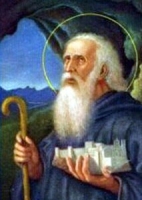
• Alferius Abbate
• Alferius the Abbot
• Adalfere, Adalfericus, Adalferius, Alfere, Alferio, Allerius, Alpherius
Member of the noble Pappacarbone family. Ambassador for Duke Gisulf of Salerno, Italy. When he fell seriously ill at the abbey of Chiusa, Italy, he made the common promise to God that if he lived, he would enter religious life. When he recovered, he became a monk at Cluny, France, training under Saint Odilo of Cluny. Duke Gisulf recalled him to Salerno to reform the monasteries in his region.
Alferius met with little success, and in 1011 he became a hermit on Mount Fenestra near Salerno. His reputation for holiness and wisdom spread, and he attracted students. He selected twelve, and founded the Benedictine abbey Holy Trinity of La Cava under the Cluniac rule. The abbey became the motherhouse for scores of others in the region; this network of houses became a powerful force for civilization and religion in Sicily and southern Italy, and twelve of the motherhouse abbots have been beatified to date. Alferius lived to be 120, governing the abbey till the day he died; on that day, he celebrated Mass, and washed the feet of his brothers, including the future Pope Blessed Victor III.
930 at Salerno, Italy
Holy Thursday 1050
1893 by Pope Leo XIII (cultus confirmed)
https://catholicsaints.info/saint-alferius-of-la-cava/
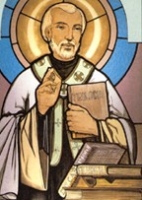
Andrea
18 April (Augustinians)
Joined the Augustinians at age 14 in Montereale, Italy. Priest. Travelling preacher in Italy and France, known for his learning and personal holiness. Studied theology in Rimini, Padua, Ferrara and Siena in Italy. Reformed Augustinian monasteries in Umbria, Italy. Chosen Augustinian provincial in 1453 and 1471. In his later years he retired to the Augustinian monastery at Montereale.
c.1403 in Mascioni, Campotosto, Italy
• 18 April 1479 at the Augustinian monastery of Montereale, Italy of natural causes
• interred in the Augustianian Friars Church in Montereale
18 February 1764 by Pope Clement XIII (cultus confirmed)
Montereale, Italy
https://catholicsaints.info/blessed-andrew-of-montereale/
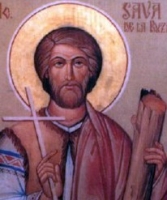
• Sabas the Goth
• Saba, Sabbas, Sava, Savo, Savva
Goth. Lector in a church in what is now Romania. Captured by heathen Goths, he refused to eat food that had been sacrificed to idols. He and several others were martyed for this.
334 in an area of modern Wallachia, Romania
• tortured to death on 12 April 372
• body tied to a stone and thrown into the river Mussovo
• relics recovered by Saint Sansala
• lectors
• torture victims
https://catholicsaints.info/saint-sabas-the-lector/

Jules I
Son of Rusticus. Elected 35th pope in 337. Built several churches in Rome. Confirmed the right of bishops to appeal to the Vatican for redress of wrongs. Fought Arianism, and supported Saint Athanasius the Great against the Arians. Ordered that the Eastern Church should celebrate Christmas on 25 December instead of combining it with Epiphany on 6 January. Considered the founder of the Vatican Archives as he ordered that all official acts be preserved.
at Rome, Italy
6 February 337
12 April 352 of natural causes
https://catholicsaints.info/pope-saint-julius-i/
• Basilios of Parion
• Basileios of Parion
• Basil of Parium
Bishop of Parion, Mysia (an area of modern Turkey) during the reign of Emperor Leo Isaureren. Defended the use of icons and images during the iconoclasm heresy, refused to sign and abide by imperial iconoclast orders, would not have contact with heretics, and prohibited them coming to his diocese. His opposition to the authorities led to renunciations, abuse, torture and years of ministering to the faithful on the run and in secret.
https://catholicsaints.info/saint-basil-of-parion/

Arkembode, Erchembod, Erchembodone, Erkembode
Travelling from Ireland to the continent to become a missionary, Erkemboden's companions were murdered and he decided to stop at the monastery of Saint-Omer in France. He became a monk and then abbot there. Bishop of Thérouanne, France for 26 years.
Ireland
714 of natural causes
https://catholicsaints.info/saint-erkemboden-of-therouanne/
Born to the Italian nobility. Known for both his learning and his piety. Bishop of Pavia, Italy in 680. He became an outspoken opponent of Monothelitism, and was known for his ministry to the poor and sick; reported to have healed a leper by a kiss. Acted as peacemaker between the Byzantine Emperor and the Lombards.
Lombardy, Italy
• 710 of natural causes
• interred in the cathedral of Pavia, Italy
https://catholicsaints.info/saint-damian-of-pavia/
Elderly Christian man who was ordered to sacrifice to Roman gods. When Artemón refused, he was dragged to the temple of Asclepius and again ordered to sacrifice; when they released him, he attacked the statues and destroyed several before being captured. Tortured and martyred.
martyed in Caesarea, Asia Minor
https://catholicsaints.info/saint-artemon-of-caesarea/
Vallombrosan monk. Abbot of the San Virgilio Abbey in Brescia, Italy. Late in life he retired to live as a hermit in Montepiano, Tuscany, Italy.
1098 in Montepiano, Tuscany, Italy of natural causes
https://catholicsaints.info/blessed-peter-of-montepiano/
Constantius
First bishop of Gap, France. Attended the Council of Orange in 519. Fought against the Arian heresy.
529 of natural causes
https://catholicsaints.info/saint-constantine-of-gap/
14th-century member of the Order of Saint Jerome. Monk at the monastery of Belem in Lisbon, Portugal. Priest. His personal piety made him a much sought after confessor.
https://catholicsaints.info/blessed-lorenzo-of-belem/
Abbot of Saint Germanus Abbey, Auxerre, France. Bishop of Auxerre by popular acclamation.
murdered in his sleep in 707
https://catholicsaints.info/saint-tetricus-of-auxerre/
Consecrated virgin martyred in the persecutions of Decius.
martyred c.250 in Fermo, Italy
Fermo, Italy
https://catholicsaints.info/saint-vissia-of-fermo/
Spiritual student of Saint Egbert in Ireland. Spent two years as a missionary in Friesland (in modern Netherlands).
England
690 in Ireland
https://catholicsaints.info/saint-wigbert/
Florentine
First abbot of Holy Apostles Abbey in Arles, France.
https://catholicsaints.info/saint-florentin-of-arles/
Catechumen martyred in the persecutions of Diocletian.
c.300 in Braga, Portugal
https://catholicsaints.info/saint-victor-of-braga/
Agutina
One of a group of 79 Christians martyred together.
https://catholicsaints.info/saint-acutina/
• Ailell of Cologne
CatholicSaints.Info Portable Edition